- July 20, 2023
- Posted by: Love Uganda Love Uganda
- Category: Blog
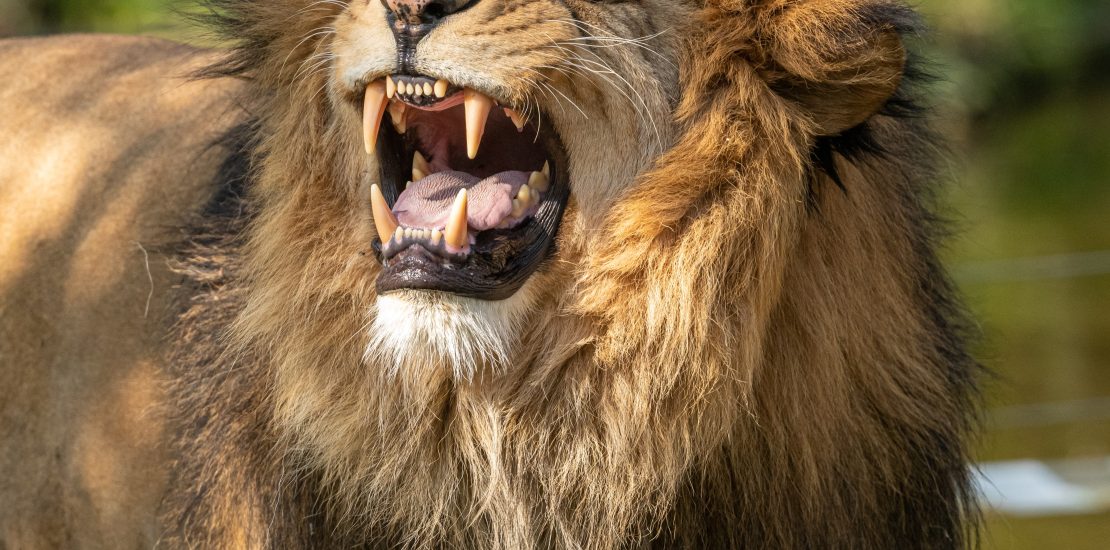
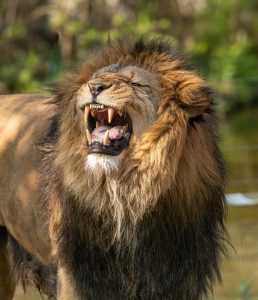
Experience the best views of Carnivores and Predators on a Uganda Safari
Uganda, like many other countries in Africa, is home to a diverse range of carnivores and predators. These animals play an important role in maintaining the balance of the ecosystem in which they live. Many people think of big cats when we talk of carnivores and predators. A Uganda safari will introduce to you both big and small carnivores and predators. While planning an adventurous Uganda Safari, you should visit at least one safari destination where you will get a chance to interact with these carnivores. Encountering at least one carnivore on your Uganda safari is a moment turned into a memory.
Here are some of the carnivores and predators you may encounter on a Uganda safari
Lions
Lions are perhaps the most famous predators found in Uganda. These majestic creatures are the only big cats that live in prides, which can consist of up to 30 lions. Lions are found in several national parks in Uganda, including Queen Elizabeth National Park and Murchison Falls National Park.
Leopards
Leopards are another big cat that can be found in Uganda. These cats are solitary and are excellent at climbing trees, making them one of the most elusive predators to spot on safari. Leopards can be found in several national parks in Uganda, including Kidepo Valley National Park and Lake Mburo National Park.
Cheetahs
Although cheetahs are not as common in Uganda as lions or leopards, they can still be found in some areas of the country. These fast and agile predators are known for their incredible speed, which allows them to catch prey that other predators might not be able to.
Hyenas
Hyenas are scavengers and are often found in groups called clans. These predators and carnivores are known for their distinctive laughing call and are found in several national parks in Uganda, including Kidepo Valley National Park and Queen Elizabeth National Park. A Uganda predator and carnivore safari trip will give an opportunity to watch hyenas roaming the savannah plains.
Wild dog
Wild dogs, also known as painted dogs, are highly social carnivores/predators that live in packs. These animals are critically endangered and are only found in a few areas of Uganda, such as Kidepo Valley National Park. Embark on a Uganda Safari trip and learn the hunting tactics of these magical species.
Crocodiles
Uganda is home to several species of crocodiles, including the Nile crocodile, which is found in most rivers and lakes in the country. These large predators are known for their powerful jaws and are often seen basking in the sun along riverbanks.
Snakes
Uganda is also home to several species of venomous snakes, including the black mamba and the puff adder. While not strictly carnivores or predators, these animals are still important members of the ecosystem and should be treated with caution.
It is important to remember that these animals are wild and should be treated with respect. Always listen to your guide’s instructions and keep a safe distance from any predators you encounter on safari.
Lion (Panthera leo)
The lion (Panthera leo) is a large carnivorous mammal and a member of the Felidae family. It is known for its distinctive mane, which is present in males but not females. Lions are found in sub-Saharan Africa and a small population exists in the Gir Forest in India. They are the only big cats that live in social groups called prides, which can consist of up to 30 individuals, typically females and their offspring, but also a small group of males.
Lions are apex predators, meaning they are at the top of the food chain in their ecosystem. They are opportunistic hunters and will prey on a variety of animals, including antelopes, zebras, buffalos, and even giraffes. Lions are known for their powerful roar, which can be heard up to five miles away and is used to communicate with other members of their pride.
In recent years, lion populations have declined significantly due to habitat loss, poaching, and conflicts with humans. As a result, lions are listed as a vulnerable species by the International Union for Conservation of Nature (IUCN). Several conservation efforts are in place to protect these magnificent animals, including anti-poaching measures, habitat restoration, and captive breeding programs.
Cheetah (Acinonyx jubatus)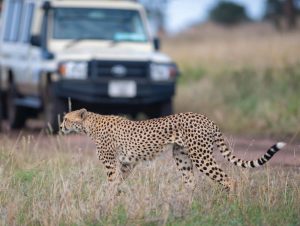
Carnivores and Predators on a Uganda Safari
The cheetah (Acinonyx jubatus) is a large, slender, and fast-running wild cat native to Africa and a small population in Iran. It is the fastest land animal, capable of reaching speeds of up to 70 miles per hour (112 kilometers per hour) in short bursts covering distances up to 500 meters. Cheetahs are known for their distinctive spotted coat, which provides excellent camouflage in grasslands and savannas.
Cheetahs are solitary hunters and primarily prey on small to medium-sized ungulates, such as gazelles and impalas. They use their speed and agility to outrun and catch their prey. Unlike other big cats, cheetahs do not have retractable claws and cannot climb trees.
Cheetahs are listed as vulnerable on the IUCN Red List due to habitat loss, poaching, and declining prey populations, among other factors. Conservation efforts are in place to protect cheetahs, including captive breeding programs, habitat restoration, and anti-poaching measures. Some organizations also work with local communities to reduce human-wildlife conflicts and promote coexistence. A Uganda Carnivores and predators safari to Kidepo Valley national park will take you to Narrus Valley. Here you will watch cheetah hunting down a gazelle.
Leopard (Panthera pardus)
The leopard (Panthera pardus) is a large and powerful wild cat native to Africa and parts of Asia. It is a highly adaptable and elusive predator that is known for its distinctive spotted coat, which provides effective camouflage in a variety of habitats, from dense forests to arid savannas.
Leopards are solitary and territorial hunters that primarily prey on small to medium-sized ungulates, such as gazelles, impalas, and deer, but they can also hunt smaller mammals like monkeys, rodents, and birds. They are known for their incredible strength, speed, and agility, which allows them to climb trees and carry prey weighing up to three times their own body weight into high branches to avoid competition from other predators.
Leopards are listed as vulnerable on the IUCN Red List due to habitat loss, poaching, and declining prey populations, among other factors. Conservation efforts are in place to protect leopards, including captive breeding programs, habitat restoration, and anti-poaching measures. Some organizations also work with local communities to reduce human-wildlife conflicts and promote coexistence.
In Uganda leopards can be seen in Lake Mburo national park, Murchison falls national park, Kidepo Valley National Park, and Queen Elizabeth national park. A night game drive in Lake Mburo national park is the best
Hyena
Hyenas are a group of carnivorous mammals belonging to the family Hyaenidae. There are four species of hyenas: the spotted hyena, the brown hyena, the striped hyena, and the aardwolf. They are found in different regions of Africa and Asia, and each species has unique physical and behavioral characteristics.
The spotted hyena (Crocuta crocuta)
This is the largest and most well-known of the hyena species. They are known for their distinctive vocalizations, which include a characteristic “laughing” call, and their powerful jaws, which can crush bone. Spotted hyenas are social animals that live in clans, which can include up to 80 individuals, and they are opportunistic hunters that prey on a variety of animals, from small rodents to large ungulates like wildebeest and zebras.
Brown hyenas (Hyaena brunnea)
These are found in southern Africa and are primarily scavengers that feed on the remains of dead animals. They are solitary and territorial animals that live in dens made in the ground or in rock crevices.
Striped hyenas (Hyaena hyaena)
These are found in North Africa and parts of Asia. They are solitary and nocturnal animals that have distinctive striped coat, which provides excellent camouflage in their arid habitat. They primarily feed on carrion, but will also hunt small mammals like rodents and birds.
Aardwolves (Proteles cristata)
These are found in eastern and southern Africa and are the smallest of the hyena species. They are primarily insectivores and feed on termites, but will also eat small mammals and birds. Unlike other hyenas, aardwolves are solitary animals that do not hunt or scavenge in groups.
Hyenas play an important role in the ecosystem as scavengers and predators, helping to maintain the balance of their habitats. However, they are often misunderstood and persecuted by humans, and several species are listed as vulnerable or endangered due to habitat loss, poaching, and human-wildlife conflicts.
Crocodile
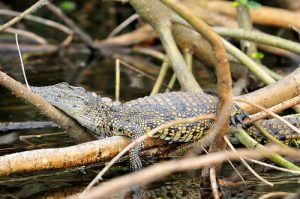
Crocodiles are large, semiaquatic reptiles belonging to the family Crocodylidae. They are found in many parts of the world, including Africa, Australia, Asia, and the Americas. There are 14 species of crocodiles, with the saltwater crocodile being the largest and the Nile crocodile being the second largest.
Crocodiles are apex predators that have been around for over 200 million years, making them one of the oldest living species on Earth. They have powerful jaws with sharp teeth that can crush bones, and they are excellent swimmers and hunters that can stay underwater for long periods of time. During your amazing Uganda Carnivores and Predators safari ensure to visit Murchison falls National park or Kazinga Channel to see a Nile crocodile.
Crocodiles are opportunistic feeders and will eat almost anything they can catch, including fish, birds, reptiles, and mammals. They are known to be ambush predators and will patiently wait for their prey to come close before suddenly attacking. Additionally, the Nile crocodile can be seen in the Mara River in Serengeti national park.
Crocodiles are important members of their ecosystems, helping to regulate the populations of other species and maintaining the balance of their habitats. However, they are also threatened by habitat loss, poaching, and human-wildlife conflicts. Several species of crocodiles are listed as vulnerable or endangered, and conservation efforts are in place to protect them, including habitat restoration, captive breeding programs, and anti-poaching measures.
In Uganda the Nile crocodile is present in areas such as Lake Victoria, Murchison falls national park, Kazinga Channel in Queen Elizabeth national park as well as Lake Mburo national park. Tourists can visit the Uganda Wildlife Education Center (UWEC) former Entebbe Zoo and have a look at this amazing species.
Snakes
Snakes are elongated, legless reptiles that belong to the suborder Serpentes. There are over 3,000 species of snakes found in almost every part of the world, from deserts to rainforests and from oceans to mountains. Snakes come in a wide range of sizes, from tiny thread snakes that are just a few inches long to the reticulated python, which can grow up to 30 feet long.
Snakes are carnivores that feed on a variety of prey, including insects, rodents, birds, and other reptiles. Some species of snakes are venomous and use their venom to subdue their prey or defend themselves from predators. However, not all snakes are venomous, and most species are harmless to humans.
Snakes play an important role in their ecosystems, helping to regulate the populations of other species and maintaining the balance of their habitats. However, they are often misunderstood and feared by humans, and many species are threatened by habitat loss, poaching, and human-wildlife conflicts.
Conservation efforts are in place to protect snakes, including habitat restoration, captive breeding programs, and anti-poaching measures. Some organizations also work with local communities to reduce human-snake conflicts and promote coexistence. It is important to remember that snakes are wild animals and should be treated with respect and caution. If you encounter a snake in the wild, it is best to keep a safe distance and avoid disturbing it.
Bengal tiger
The Bengal tiger (Panthera tigris tigris) is a subspecies of tiger that is found primarily in India, but also in other parts of Southeast Asia. It is the most numerous tiger subspecies but is still listed as endangered due to habitat loss, poaching, and human-wildlife conflicts.
Bengal tigers are the largest members of the cat family and are known for their distinctive orange coats with black stripes. They are apex predators and are at the top of the food chain in their ecosystems. They primarily hunt large ungulates, such as deer and wild boar, but will also prey on smaller animals like birds and reptiles.
Bengal tigers are solitary animals and are known for their strength, speed, and agility. They are also excellent swimmers and can swim across rivers and lakes to track their prey. Bengal tigers are territorial and will defend their home range from other tigers.
In Uganda, Bengal tigers can be seen at the Uganda Wildlife Education Center (UWEC). UWEC lies just a few kilometers from Uganda’s main entry point Entebbe International Airport. Take on a Uganda Predators and Carnivores Safari to UWEC with Love Uganda Safaris and get a mesmerizing safari experience. More so, a trip via UWEC gives you a chance to see other wildlife species. These include among others but not limited to elephants, mountain gorillas, chimpanzees, giraffes, and several bird species.
The African wild dog (Lycaon pictus)
The African wild dog, also known as the painted dog or Cape hunting dog, is a highly endangered species. These can be found in Uganda, primarily in the Kidepo Valley National Park and the Murchison Falls National Park.
In Uganda, the African wild dog is threatened by habitat loss, hunting, and disease. The population of African wild dogs in Uganda is estimated to be around 300 individuals. Conservation efforts are being made to protect and increase the population of African wild dogs in Uganda.
The African wild dog is a social animal and lives in packs of up to 30 individuals. They are excellent hunters and can take down large prey such as antelopes and zebras. They are also known for their unique coat patterns, which are made up of black, brown, white, and yellow patches.
Visit Kidepo Valley National Park or Murchison Falls National Park to see the African wild dogs . However, it is important to note that these animals are highly endangered. They should be observed from a safe distance to avoid disturbing them or their habitat.
Which national park in Uganda has all the Predators? Where to see carnivores and predators on a Uganda Safari?
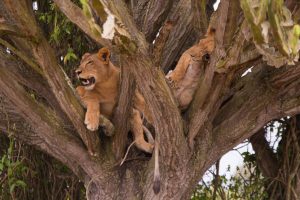
Queen Elizabeth National Park in Uganda is known for having a high concentration of predators. Almost all of the predators in Uganda are found in Queen Elizabeth national park. The park is home to lions, leopards, hyenas, crocodiles, etc. In addition to predators, Queen Elizabeth National Park also has a diverse range of other wildlife. These include elephants, buffaloes, antelopes, hippos, crocodiles, and primates such as chimpanzees and baboons. Beautiful landscapes, including the Kazinga Channel make up Queen Elizabeth national park. The channel is a popular spot for boat safaris.
Visitors to Queen Elizabeth National Park can enjoy game drives, boat safaris, and guided walks to observe the park’s wildlife. It is important to follow park rules and guidelines. Observe wildlife from a safe distance to avoid disturbing the animals or their habitat.
In conclusion, if you are looking for the best predators and carnivores experience on a Uganda safari, look no further. Embarking on a Uganda carnivorous safari is one of the ways to explore true African wilderness. Experienced safari guides will give you more than just sightings. It is education on how these predators live, multiply, feed, and fit in the survival game of the ecosystem.
3 Comments
Leave a Reply
You must be logged in to post a comment.

[…] the idea of setting up a flimsy tent in a National Park full of the world’s greatest predators may seem to be life-risking and scary. Fear not, there are some basic concepts about the bush in […]
[…] There are chances of witnessing a leopard hunt down a gazelle and take it up the tree branches. Leopards are some of the loner animal species whose solitary nature does not allow them to stand tight […]
[…] as each struggles to see the next day. As earlier stated, Kidepo Valley National Park is home to carnivores and great hunters. These include; lions, leopards, cheetahs, and hyenas. On a game drive in the Narrus Valley, you […]